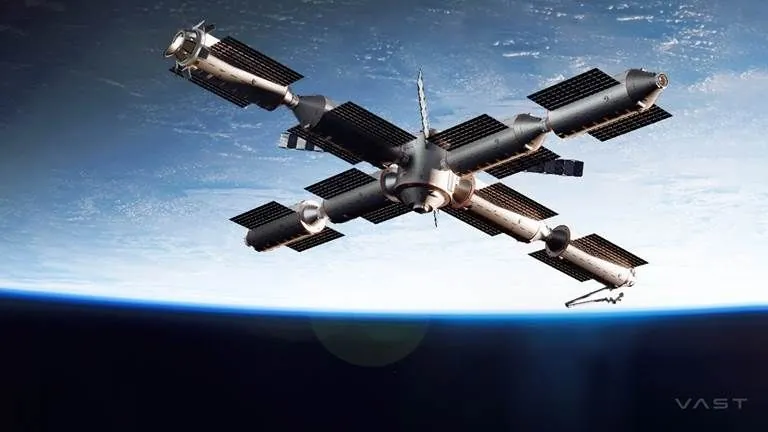
Vast Space Announces Haven-2: The Future of Commercial Space Stations Post-ISS
2024-10-15
Author: Lok
Haven-2: A Vision Built for Expansion
As the countdown to the retirement of the International Space Station (ISS) ticks down to 2030, the race for its successor is heating up. With just six years left, multiple private companies, including U.S.-based Vast Space, are stepping up to claim their stake in low-Earth orbit as they aim to establish the first-ever commercial orbital laboratory.
Haven-2: A Vision Built for Expansion
During the 75th International Astronautical Congress (IAC) held in Milan, Italy, on October 14, Vast's CEO, Max Haot, presented Haven-2—a groundbreaking proposal intended to follow the ISS. This private space station embodies Vast's vision of paving the way for long-term habitation in space, expressed in Haot's statement: "Our focus this decade is to win the NASA Commercial LEO Destination (CLD) contract and build the successor to the International Space Station. To achieve this, we will first demonstrate our capability by building and operating the world's first commercial space station, Haven-1, slated for launch in 2025."
A Comprehensive Construction Plan
Haven-2 is designed to be modular and NASA-certified, allowing for a phased construction approach in low-Earth orbit, similar to the ISS. If awarded the lucrative NASA CLD contract in 2026, the first Haven-2 module could be fully operational by 2028.
Unique Features Set Haven-2 Apart
The initial module of Haven-2 will be a compact 16 feet long, with plans to launch three additional modules within a two-year timeframe from 2030 to 2032. Each new addition will not only expand the station's size but also enhance its life support systems and payload capabilities, positioning Haven-2 as a center for cutting-edge research and exploration.
Despite being a commercial venture, Haven-2 is envisioned as a platform for international collaboration. Andrew Feustel, a 23-year veteran NASA astronaut and advisor for Vast, emphasized the importance of integration: "Haven-2 is being designed with compatibility in mind, ensuring that international partners can integrate seamlessly into this next-generation platform." This cooperative vision aims to spur scientific and technological advancements, benefiting both existing and emerging space-faring nations around the globe.
With the ISS having facilitated numerous experiments in microgravity, Haven-2 aims to uphold this legacy through its advanced lab module. Vast promises state-of-the-art facilities that will meet NASA's Basic Laboratory Capabilities criteria, supporting various fields of research and in-space manufacturing.
A New Era Begins
Upon completion, Haven-2 is projected to feature a remarkable 41-foot-wide cupola window, offering breathtaking views of Earth and the cosmos, while each module will include 3.6-foot-wide windows, totaling 16 viewing ports. These design elements will not only enhance the astronaut experience but potentially provide stunning imagery for educational and promotional purposes.
In addition to its aesthetic features, Haven-2 boasts extensive payload capabilities, including a robotic arm for maneuvering cargo, berthing ports for visiting vehicles, and airlocks designed for extravehicular activities—commonly known as spacewalks. Such functionalities highlight Vast's ambition to create a space station that surpasses its predecessors in volume, efficiency, and versatility.
As discussions surrounding the future of human activity in space gain momentum, Haven-2 is positioned to become a reference point for next-generation space platforms, fuelling ambitions for a burgeoning low-Earth orbit economy. The vision of Vast Space could soon become a reality, ushering in a new era of exploration and habitation beyond our planet.





 Brasil (PT)
Brasil (PT)
 Canada (EN)
Canada (EN)
 Chile (ES)
Chile (ES)
 España (ES)
España (ES)
 France (FR)
France (FR)
 Hong Kong (EN)
Hong Kong (EN)
 Italia (IT)
Italia (IT)
 日本 (JA)
日本 (JA)
 Magyarország (HU)
Magyarország (HU)
 Norge (NO)
Norge (NO)
 Polska (PL)
Polska (PL)
 Schweiz (DE)
Schweiz (DE)
 Singapore (EN)
Singapore (EN)
 Sverige (SV)
Sverige (SV)
 Suomi (FI)
Suomi (FI)
 Türkiye (TR)
Türkiye (TR)